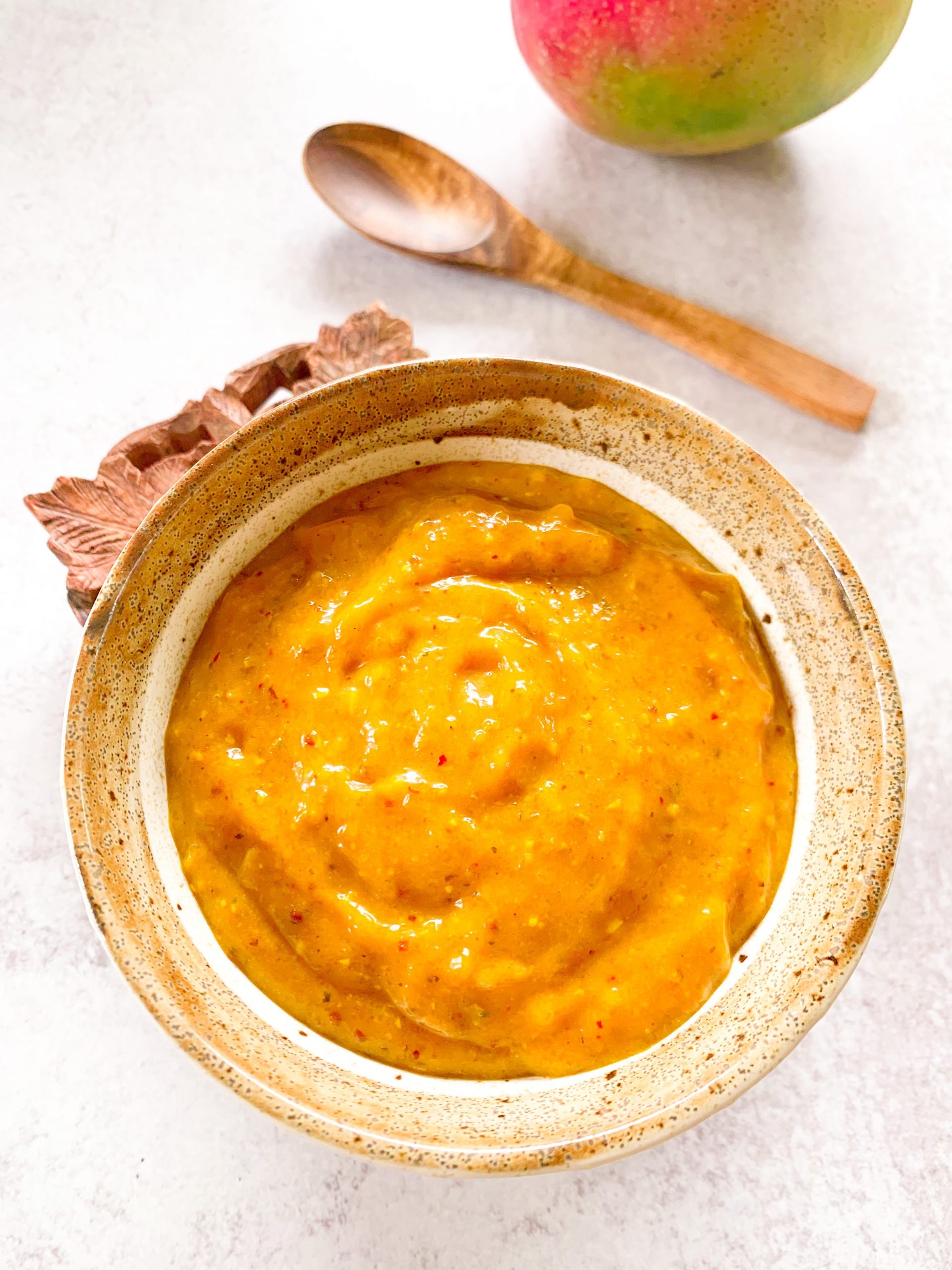
I’m back! And I learned what anosmia is.
Well, it’s been a while. In December of last year my full-time job was in full gear and life simply got in the way. January and February meant business travel in the Middle East, and by late February when I was flying home the whole office was talking about the novel coronavirus. In March my daughter’s school closed and learning went online – and by the end of March it felt as if an elephant were sitting on my chest, each breath producing a strange wheezing sound. Fever. Chills. Fatigue unlike anything I’d ever known (including late pregnancy). And then finally, when all of this subsided, I woke up one morning and thought I’d made my coffee incorrectly because it was so weak; by the end of the day I realised I had completely lost my sense of smell and roughly 90% of my sense of taste.
For an entire month I navigated a world with no sense of smell – which for a person as obsessed with food as I am is absolutely miserable. Even beyond my love of eating, what if I left the gas stove on and couldn’t smell it? What if the food in my fridge was spoiled? I realised I had never relied on labels for my spices because I could identify them on smell alone – something my husband couldn’t do for me. After a month I began to wonder if my sense of smell would return, as it had made no recovery whatsoever. I Googled articles about anosmia and terrified myself that I wasn’t going to smell anything ever again.
A month later, it started to return – mostly bad smells at first – the compost bin, the cat box, and so on – and every day I would stick my nose into a jar of cinnamon sticks or ground cumin and inhale deeply – willing myself to smell. Slowly, over the course of the next three weeks it returned, but muted. I still did not feel completely confident in the kitchen, wondering if I was over-spicing things. Strangely, mint (one of my favourite smells) was one of the last smells to return. It took another couple of months for my smell and taste to return to the point where it had been before the illness, and thus it is only now that I feel comfortable coming back to share recipes with you. Anyway, with that out of the way – let’s get to some beautiful Iraqi food, shall we?
On to the Amba!
For the unfamiliar, amba is a fermented mango condiment popular in Iraqi cuisine. It is a little sour, a little spicy, and (if fermented) a little funky. For a time Trader Joe’s carried a pre-packaged amba, and I happily purchased this for our family’s sabich nights (sabich being an Iraqi sandwich featuring fried aubergine / eggplant), until it was recently discontinued and thus I started to make my own. It is similar to the Southeast Asian ‘achar’, and a distant, more savoury cousin to the Indian mango chutneys ever-prevalent in my British upbringing. Unripe mango is combined with chili, garlic, and spices like fenugreek, cumin, coriander, and turmeric to make a brightly coloured and deeply spiced condiment that pairs beautifully with meat or vegetables.
My recipe for amba is not fermented, and can be made, cooled, and consumed in the same day with no noticeable loss of deliciousness – a little apple cider vinegar stands in for time fermenting. This recipe makes enough for 8-10 people to enjoy with their sabich, and keeps for a week in the refrigerator. It’s also great on shawarma, falafel, and roasted veggies – so you may want to double the recipe!
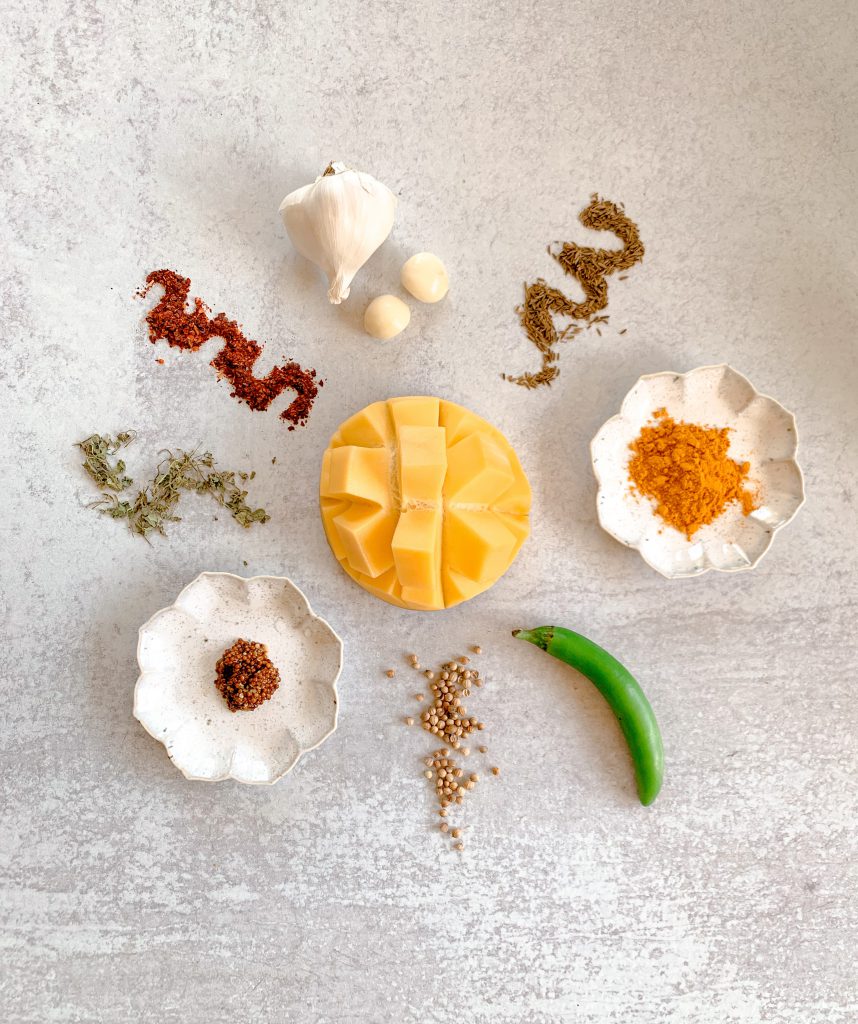
How to Make Amba
Firstly, if you can – use an unripe mango (this is usually easier than finding ripe ones, at least in the supermarkets by me). If your mango is more ripe, that’s okay – you’ll just want to leave out the brown sugar since it’ll have plenty of its own sugars to caramelise.
First, peel and cut your mango into 1/2 inch / 1cm pieces, place in a small bowl, add salt, then toss to combine. Set aside. In a saucepan with a lid (I use Staub’s Perfect Pan here), add your olive oil and heat on medium. Once the oil has warmed add your garlic and chili, and cook until the garlic is just starting to change colour. Now, add your spices and coat with the oil – heating for about a minute until they are fragrant. If you need to coat with a little more oil to form a paste, that’s fine. Once your spices are fragrant, add your water and vinegar, stirring to combine, then finally add your mango and salt mixture (along with any juices in the bowl). Mix well, then pop the lid on and allow to gently simmer for 10-12 minutes, or until just caramelised. Take off the heat and allow to cool.
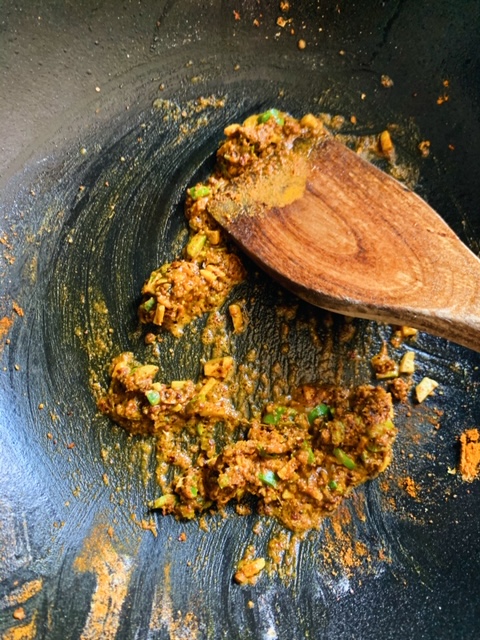
Saute your garlic and chili then add spices. 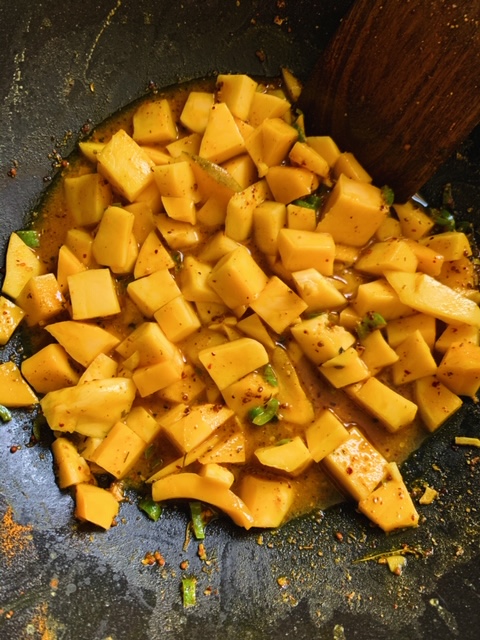
Once fragrant, add the water and mango / salt mix. 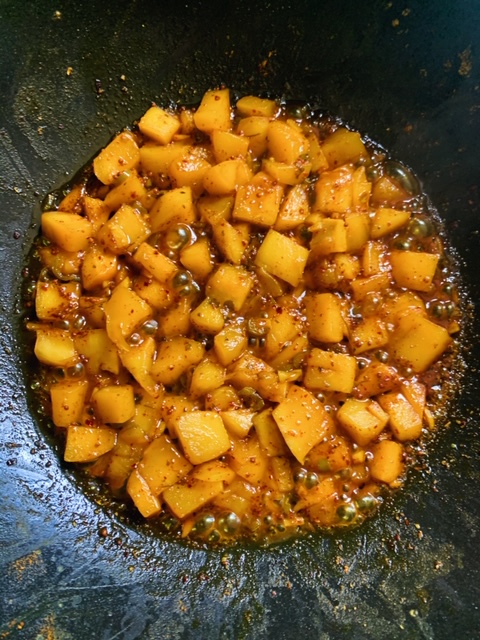
Saute covered for 10-12 minutes, or until just caramelised.
Once the amba has cooled to room temperature, place in a blender or food processor to puree. You can leave it a little chunky if you prefer, but for sabich smooth is traditional. Do what makes you happy!
Iraqi Amba Recipe
Iraqi Amba
Equipment
- Medium saucepan
Ingredients
- 1 large mango firm and unripe, if possible
- 2 tsp kosher salt
- 1 tbsp olive oil
- 2 cloves garlic finely chopped
- 1 small red or green chili (I used a serrano)
- ½ tsp mustard seed
- 1 tsp turmeric ground
- ½ tsp dried fenugreek leaves or ¼ tsp ground fenugreek
- ½ tsp ground cumin seed
- ½ tsp ground coriander seed
- ½ tsp Aleppo pepper
- 1 Tbsp brown sugar
- ½ cup water (118ml / 4 fl oz)
- 2 Tbsp apple cider vinegar
Instructions
- First, peel and cut your mango into 1/2 inch / 1cm pieces, place in a small bowl, add salt, then toss to combine. Set aside.
- In a saucepan with a lid (I use Staub's Perfect Pan here), add your olive oil and heat on medium. Once the oil has warmed add your garlic and chili, and cook until the garlic is just starting to change colour.
- Now, add your spices and coat with the oil – heating for about a minute until they are fragrant. If you need to coat with a little more oil to form a paste, that's fine.
- Once your spices are fragrant, add your water and vinegar,stirring to combine, then finally add your mango and salt mixture (along with any juices in the bowl). Mix well, then pop the lid on and allow to gently simmer for 10-12 minutes, or until just caramelised. Take off the heat and allow to cool.

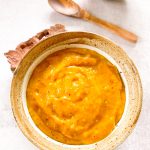
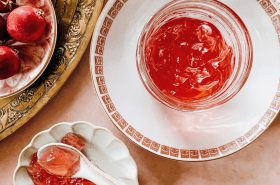
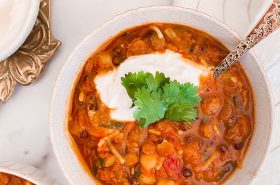
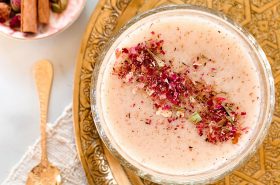


Lindsay Elitharp
Thank you for this! I’ve been pining for the Trader Joe’s amba and the kind I can get at the Indian grocery store isn’t quite the right flavor.
Michele
This is a great recipe Elizabeth, I am really looking forward to making it – mostly to have as part of sabich 🙂 Can you please let me know how much 1 large mango is in cups? And, is ripe mango ok, or should it be green/unripe?…Thanks! Michele
Elisabeth
Hi Michele! I’d say it’s roughly 1 cup of mango. Ripe mango is totally okay, you’ll just want to omit the sugar in this case.
Drew
Wonderful recipe! Amba actually has a fascinating history. It was (apocryphally) invented in Bombay, India by a prominent family of Baghdadi Jews and it then spread in popularity rapidly among the Iraqi and Kurdish Jewish populations and then took off, becoming a favorite of the entire region, as well as becoming popular in part of India.
Elisabeth
This is a fascinating history indeed! Thank you for sharing.
Alysia
Hello, would you be able to use frozen mangos (defrosted, of course)?
Thank you!
Elisabeth
Hi Alysia! Yes, you can absolutely use frozen mango chunks here!